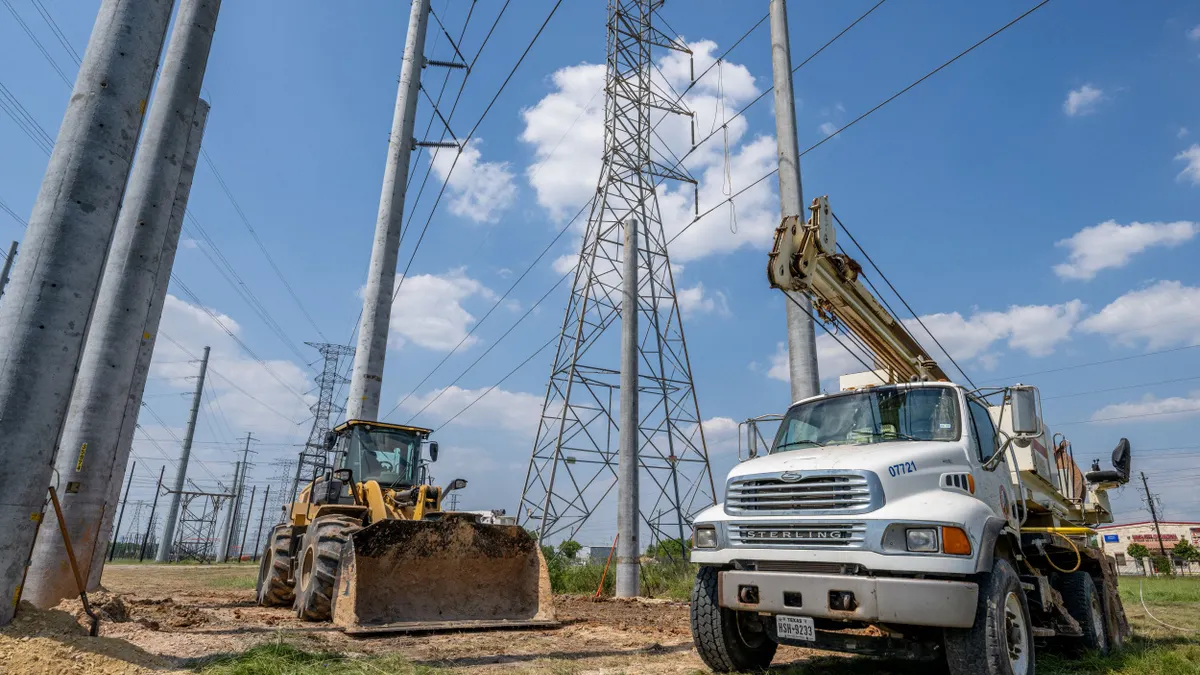The California Public Utilities Commission in mid-January became the first state regulator to issue revenue stacking rules for energy storage projects, but the rules could be more of a starting point than an end point.
Revenue stacking — the layering of uses for a storage system to allow for more than one revenue stream — has become something of a Holy Grail for energy storage projects since the concept was included in a 2015 paper by the Rocky Mountain Institute. The idea is that the economics of energy storage can be optimized by using its unique characteristics to act as both load and supply, which gives it the flexibility to provide multiple uses or applications, sometimes simultaneously, and therefore layer on more than one revenue stream.
“The new rules will provide a framework for authorizing multi-use applications for energy storage projects that should guide both utilities and developers alike,” Alex Morris, vice president of policy for the California Energy Storage Alliance, told Utility Dive.
In addition to drawing up a set of 11 rules on revenue stacking, the underlying order also establishes a working group to develop “clear, actionable recommendations” on issues such as compensation for PUC jurisdictional services, the appropriate metering and measurement of Multi-Use Applications, and PUC enforcement of Multi-Use Application rules. It also includes recommendations on enabling uses for community storage projects and the implementation of AB 2868 — a 2016 law that calls for the “acceleration” of 500 MW of distribution-connected energy storage facilities, such as behind-the-meter and community energy storage installations.
California Public Utilities Commissioner Carla Peterman raised the possibility of opening another proceeding on energy storage, if need be. The CPUC is also exploring the idea of instituting an expedited process for approval of energy storage projects, Morris said.
Storage solicitations in progress
There will be ample opportunity to work out the new revenue stacking rules in practice as there are several energy storage solicitations in various stages of progress.
In mid-January, the CPUC rejected Calpine’s efforts to secure reliability must-run contracts for three of its gas-fired plants — the 580 MW Metcalf Energy Center south of San Jose and two 47 MW peaking plants in Yuba City.
The CPUC ruled that the reliability must-run contracts are too costly and, instead, authorized Pacific Gas and Electric (PG&E) to procure energy storage or preferred resources, such as distributed solar, to replace the capacity of the three Calpine plants.
Analysts believe it is the first time a utility is procuring energy storage to replace capacity from an existing gas plant.
The peaker replacement solicitation should also help PG&E fulfill its obligations under California law AB 2514, passed in 2013, which requires the state’s three investor-owned utilities to procure a total of 1,325 MW of energy storage resources.
In early December, PG&E filed six contracts representing 165 MW of energy storage projects with the PUC for review and approval. Since 2015, the utility has signed contracts for 79 MW of new energy storage.
In addition, in May 2016, the CPUC directed Southern California Edison to conduct an expedited procurement for both utility-owned and third party storage resources to replace a potential generation shortfall as a result of the gas leaks at the Aliso Canyon storage fields.
As noted above, the PUC has also set a target, not mandatory, of 500 MW of distribution-connected storage for California’s investor-owned utilities. That comes to 166.66 MW per utility. That storage capacity will also be procured via competitive solicitations.
More revenue generation options
Under the new revenue stacking rules, projects proposed in the upcoming solicitations could have more options for revenue generation. For example, an energy storage project that is designed to replace a gas peaking plant could be idle for long periods of time. Under the new rules, that storage facility could be put to use when idle to provide services such as frequency regulation, capacity or spinning reserves.
“There is no reason to have a storage project run as infrequently as a peaker,” Morris said. Presumably, the upcoming solicitations will draw proposals for hybrid or multi-use storage projects, he told Utility Dive.
In its recent order, the CPUC said that its existing rules limited combinations of services “to a significant extent in some cases.” For instance, while there was some flexibility for storage installations between the transmission and distribution domains, there was minimal flexibility into and out of the customer grid domain.
Based on comments it received during the rulemaking process, the CPUC adopted three categories of Multiple-Use Applications, namely, time differentiated applications, capacity differentiated applications and simultaneous Multi-Use Applications. The order also identified five domains for energy storage: customer (behind the meter), distribution, transmission, wholesale markets and resource adequacy.
Under the heading of “transmission,” the CPUC included as “placeholders” characteristics now provided by conventional generators, such as voltage support, inertia and primary frequency response. In the future, these could be defined and procured as separate products by the California ISO, and provided by energy storage systems.
The California ISO is currently working with stakeholders to enable wholesale market participation of energy storage assets interconnected to the distribution and transmission grids, primarily through the Energy Storage and Distributed Energy Resources stakeholder initiative. The ISO has included Multi-Use Application issues in phase 3 of the initiative.
11 rules
So what exactly do the 11 revenue stacking rules in the CPUC's January order specify? Here's a rundown of the main points.
Rules 1 through 3 specify that storage resources may only provide services within the domain in which they are interconnected or to a higher level grid domain, but they cannot provide services from higher level to lower level domains. For instance, a distribution interconnected storage project can provide services to the transmission grid domain, but the reverse would not work.
Rules 4 through 8 address storage used for reliability. Rule 4 states that storage resources interconnected in any grid domain may provide resource adequacy, transmission and wholesale market services.
Rule 5 gives priority to reliability services over non-reliability services on the premise that certain services are more important to the reliability of the grid than others, and rule 6 specifies that no storage resource may contract for more than one reliability service over the same time interval and using the same capacity.
Rule 7 adds an exception to rule 6 in that a single storage resource may contract for resource adequacy capacity and provide wholesale market reliability services using the same capacity, and over the same time interval.
The order, however, is cautious on the issue of reliability. While the energy storage industry generally supports a system of incentives and penalties for reliability services, the CPUC is wary about whether that system would be sufficient.
“Provision of such services in real time should not be left entirely to the resource operator's financial optimization. We are not comfortable that a sufficient set of penalties can be created in the short term,” the order says.
The storage industry “is not primarily tasked with ensuring the reliable operation of the grid. Thus, it is insufficient to simply rely upon existing penalties and rules to ensure real-time reliability performance,” the order continues.
Rule 9 aims at transparency by stipulating that an energy storage provider responding to a solicitation is required to list any additional services it currently provides outside of the solicitation.
Rule 10 says that all storage resources must comply with availability and performance requirements specified by the relevant authority.
Rule 11 says that compensation can only be provided for services that are incremental or distinct and measurable.
California may be the first to spell out rules for revenue stacking energy storage applications, but other states, such as New York, are also working out their energy storage policies. “California will figure this out, and a lot of states will incorporate some dimension” of their rules, Lon Huber, a vice president at Strategen Consulting, told Utility Dive.





















